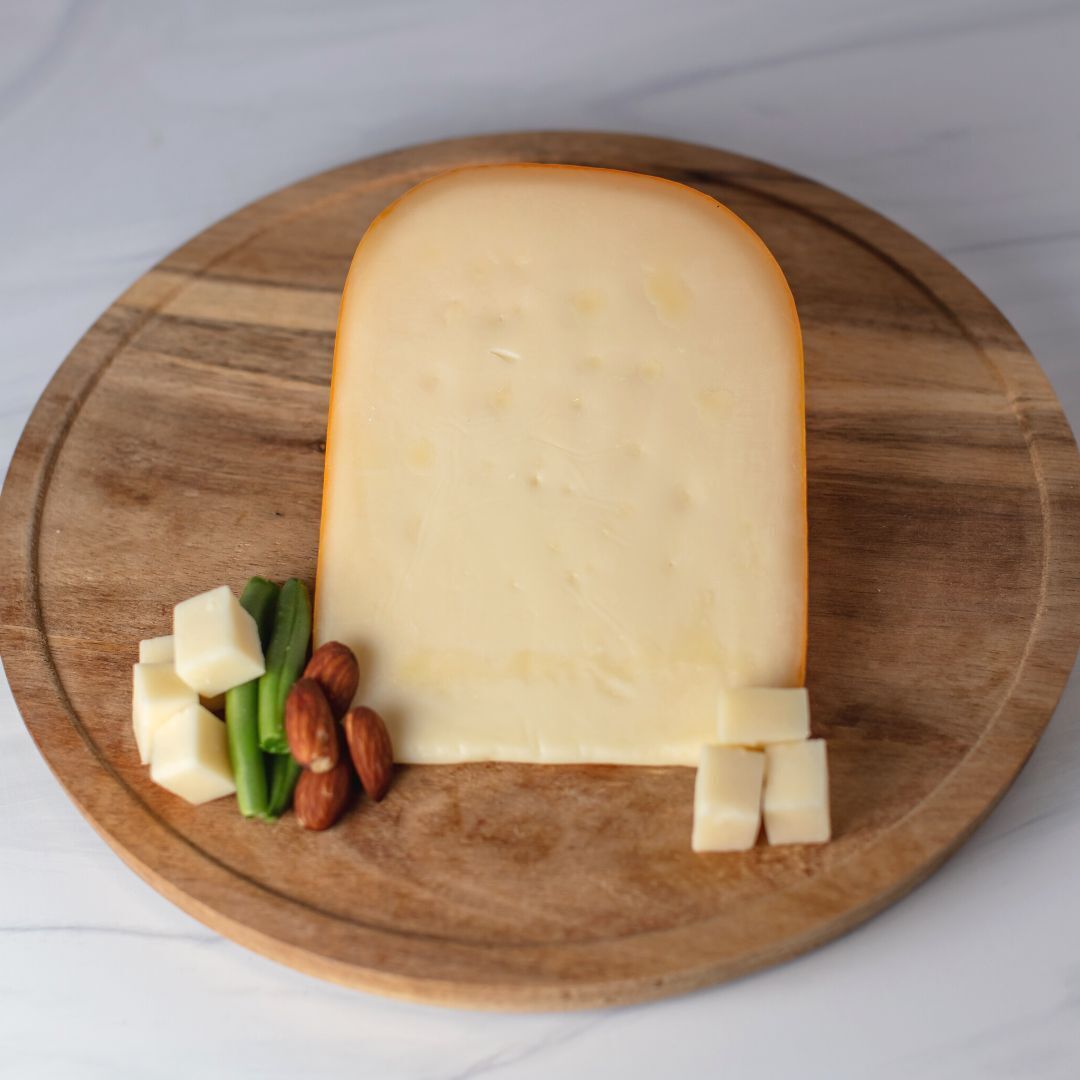Cheese Profile:
This week’s cheese is from one of my absolute favorite cheesemakers and figures in the American cheese world: Marieke Penterman. Marieke grew up on a 60 cow dairy farm in the Netherlands. She and her husband Rolf wanted to start a dairy farm, but with land limited and expensive in the Netherlands, they set their sights on a foreign land: Wisconsin. They now own and operate a dairy farm in Thorp Wisconsin with an adjoining creamery. All of their production is focused on one cheese: authentic Dutch Gouda, like the one Marieke and Rolf grew up with.
Gouda as a style is defined by the act of “washing curds,” or adding water to young curds during the cheesemaking process. This process removes lactose, the chief food for starter culture. This results in less acid building, producing a sweeter cheese. Under the umbrella of Gouda, you’ll see a range of milk types, added flavors, ages–you name it.
Marieke produces goudas from a few months up through 2 years plus aging. This week’s selection is a 9-12 month version. I really like the moisture still present but you still get those, as my cheese counter customers used to say, “crunchy bits” or tyrosine crystals that come with longer aging. The flavor and aromas are wonderfully milky, sweet, and caramelly. Of note here: all of Marieke’s cheeses are raw milk, showing off the premium quality of Penterman Farm’s milk.
Enjoy with a malty beer and some of the first of the season fruit starting to come into the store: yellow peaches, cherries, apricots. Ham or prosciutto is also a great addition.
Fun Fact:
We don’t get this in the United States, but if you’re ever in Western Europe, be sure to track down some Reblochon. A delightful origin story: “reblocher” means something like “to pinch a cow’s udders again”. During the 14th century, mountain farmers in the Haute Savoie were taxed by landowners based on the amount of milk produced. Naturally, they only half milked their cows for the landowner’s measurements, only to perform a secret second milking later in the day. This “second milk” was richer, perfect for making what would eventually be called Reblochon.

